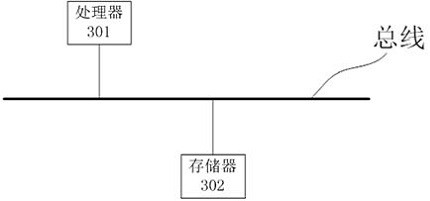Spine wave recognition method and device, electronic equipment and storage medium
An identification method and computer technology, applied in the medical field, can solve the problems of single-angle features and low accuracy of spike wave identification, and achieve the effect of improving detection accuracy
- Summary
- Abstract
- Description
- Claims
- Application Information
AI Technical Summary
Problems solved by technology
Method used
Image
Examples
Embodiment 1
[0071] This embodiment provides a spike recognition method, figure 1 It is to illustrate that according to some embodiments of the present invention, by extracting the morphological features, time-frequency features and nonlinear dynamic features of the EEG signal segment to be identified, and using the extracted multi-view features as the input of the detection model, to identify A flow chart of whether the EEG signal segment to be identified is a spike wave signal segment. Although the processes described below include operations in a particular order, it should be clearly understood that these processes may also include more or fewer operations, which may be performed sequentially or in parallel (e.g., using parallel processors or multi-threaded environment).
[0072] This embodiment provides a spike identification method, which is used to identify the category of the EEG signal segment to be identified, such as figure 1 shown, including the following steps:
[0073] S10...
Embodiment 2
[0129] This embodiment provides a spike identification device for identifying and judging spike signal segments and non-spike signal segments in EEG signals, such as figure 2 shown, including:
[0130] The acquisition module 201 is configured to acquire the EEG signal segment to be identified in the EEG signal; for details, please refer to the relevant description of step S101 in Embodiment 1, and details will not be repeated here.
[0131] The first extraction module 202 is configured to extract, from the EEG signal segment to be identified, morphological features for characterizing the shape of the EEG signal segment to be identified; for details, please refer to the relevant description of step S102 in Embodiment 1, I won't repeat them here.
[0132] The second extraction module 203 is configured to perform wavelet transform on the EEG signal segment to be identified, and extract the time-frequency features of the EEG signal segment to be identified; for details, please r...
Embodiment 3
[0137] This embodiment provides an electronic device, such as image 3 As shown, the device includes a processor 301 and a memory 302, wherein the processor 301 and the memory 302 can be connected through a bus or in other ways, image 3 Take connection via bus as an example.
[0138] The processor 301 may be a central processing unit (Central Processing Unit, CPU). The processor 301 can also be other general-purpose processors, digital signal processors (Digital Signal Processor, DSP), graphics processors (Graphics Processing Unit, GPU), embedded neural network processors (Neural-network Processing Unit, NPU) or other Dedicated deep learning coprocessor, Application Specific Integrated Circuit (ASIC), Field-Programmable Gate Array (FPGA) or other programmable logic devices, discrete gate or transistor logic devices, discrete hardware components and other chips, or a combination of the above-mentioned types of chips.
[0139] The memory 302, as a non-transitory computer-rea...
PUM
 Login to View More
Login to View More Abstract
Description
Claims
Application Information
 Login to View More
Login to View More - R&D
- Intellectual Property
- Life Sciences
- Materials
- Tech Scout
- Unparalleled Data Quality
- Higher Quality Content
- 60% Fewer Hallucinations
Browse by: Latest US Patents, China's latest patents, Technical Efficacy Thesaurus, Application Domain, Technology Topic, Popular Technical Reports.
© 2025 PatSnap. All rights reserved.Legal|Privacy policy|Modern Slavery Act Transparency Statement|Sitemap|About US| Contact US: help@patsnap.com



